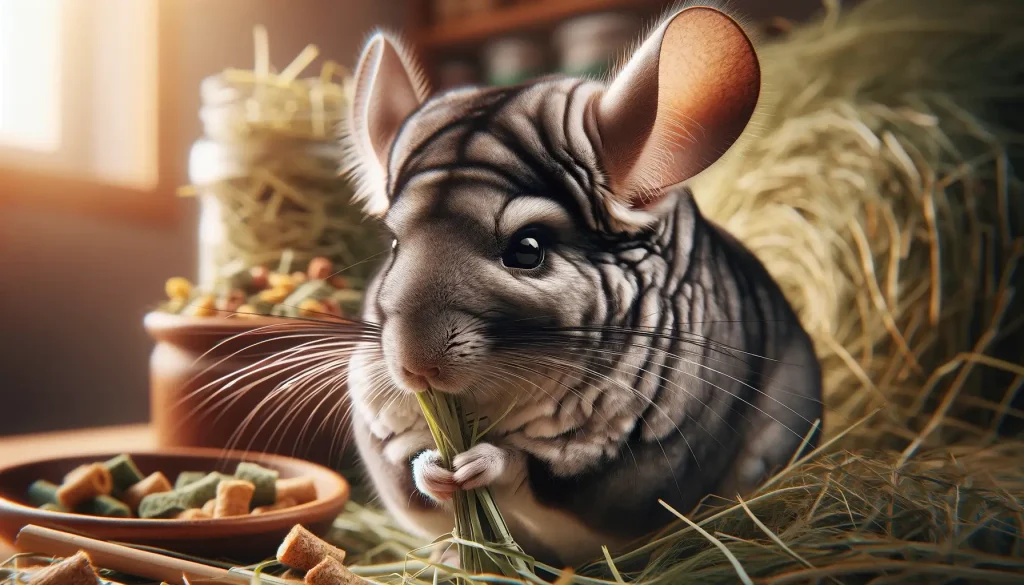
Chinchillas make for unique and fascinating pets. Known for their clean, quiet nature and the absence of any strong odor, they are attractive options for pet lovers. These soft-furred rodents boast an impressive lifespan of 10-20 years. However, caring for them goes beyond their appealing characteristics. Originally bred for their soft, dense fur, chinchillas have found a place in the hearts and homes of many. They can be somewhat shy, which makes them more suitable for adults and older children.
Let’s dive deeper into what makes chinchillas special: they are athletic creatures with the ability to jump over six feet in the air, thanks to their long hind limbs. This agility means they can easily leap onto high surfaces, even the top of refrigerators! Moreover, chinchillas are highly social animals. In their natural habitat, they form large colonies, sometimes comprising more than 100 individuals.
One of the essential aspects of chinchilla care is their diet. Requiring a high-fibre diet, it’s crucial to provide them with plenty of hay. This not only caters to their nutritional needs but also helps wear down their constantly growing teeth. Speaking of their unique needs, chinchillas possess an unusual digestive system. They produce special droppings known as caecotrophs, which they consume to absorb and digest again for maximal nutrient uptake.
Being nocturnal, chinchillas are most active during the evening and night, sleeping through much of the daytime. This lifestyle is something potential pet owners should consider to match their own schedules and interactions with these animals.
So, if you’re considering adding a chinchilla to your family, remember, it’s about meeting their specific needs and ensuring a safe, comforting environment that mimics their natural habitat. Stay tuned for more detailed insights on each care aspect in the following sections.
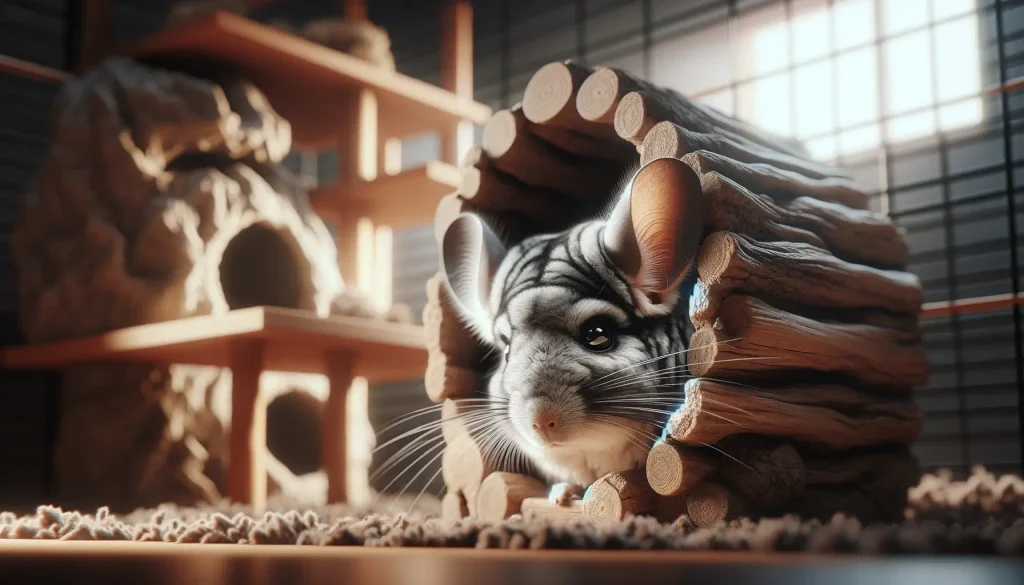
Fun Facts about Chinchillas
Chinchillas are remarkable creatures with many intriguing traits. Here’s a look at some of the fun facts that make these pets so special:
Chinchillas Have Incredible Jumping Power
Thanks to their long hind limbs, chinchillas possess an impressive ability to leap into the air. They can jump over six feet high, which is quite a feat considering their small size. This agility enables them to reach high places, such as the tops of refrigerators, with ease.
Social Life in the Wild
In their natural habitat, chinchillas are not loners. They exhibit highly social behaviors, forming colonies that can consist of more than 100 members. This social structure is crucial to their survival, helping them protect each other from predators and harsh environments.
They Need a High-Fibre Diet
Chinchillas require a diet rich in fibre. Their primary food source, hay, is essential for two main reasons. Firstly, it helps maintain their digestive health. Secondly, the abrasiveness of the hay aids in wearing down their constantly growing teeth.
Unique Digestive System
Speaking of their diet, chinchillas have an unusual digestive system. They produce a type of dropping known as caecotrophs, which they consume again. This process allows them to extract and absorb nutrients effectively on the second digestion.
Nocturnal Creatures
Chinchillas are nocturnal, meaning they are most active during the evening and night. They spend the majority of the day sleeping and become lively when the sun sets. Understanding this behavior is crucial for potential pet owners to align their interaction times accordingly.
Adapted to Cool Climates
Originally from mountainous regions in South America, chinchillas have evolved to thrive in cool, cold, and dry climates. Their soft, dense fur is not just for looks; it keeps them warm under frigid conditions. When keeping a chinchilla as a pet, ensuring their habitat mimics these temperature and humidity levels is essential for their wellbeing.
Longevity
With proper care, chinchillas can live from 10-20 years, making them long-term companions. Their lifespan is significantly longer than many other rodents, which is an important consideration for anyone thinking of adopting one.
Rescue and Adoption
The RSPCA and similar organizations often have chinchillas available for adoption. Opting to adopt provides a chinchilla in need with a loving home. Given their special requirements, ensuring you’re prepared to meet their needs is crucial.
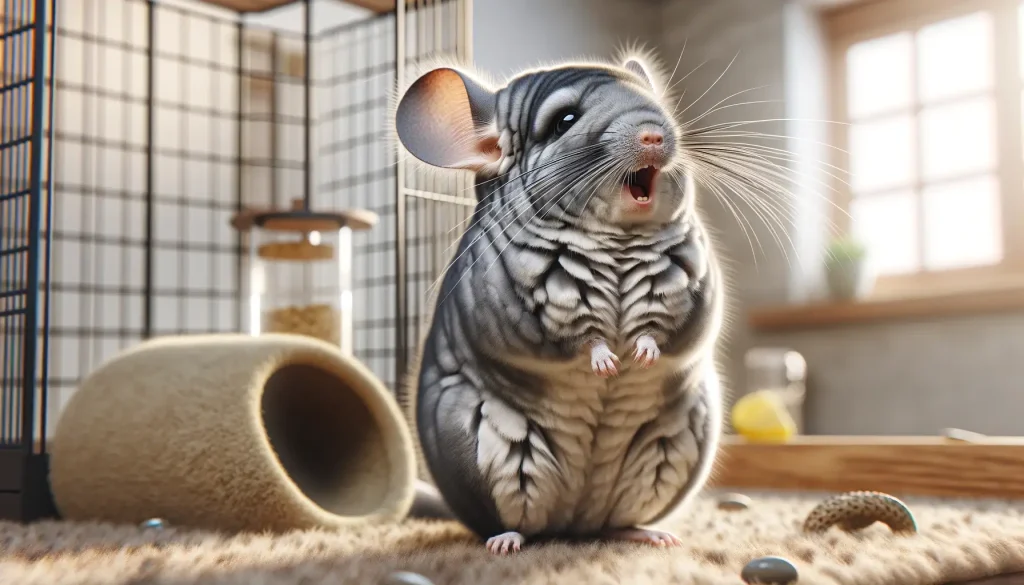
Chinchilla Vocalizations and Body Language
Chinchillas are expressive animals, and understanding their vocalizations and body language is vital for owners who wish to bond with their pets and ensure their well-being. These small creatures communicate in various ways, each carrying different meanings, from contentment to distress, making it crucial for pet owners to grasp these nuances.
Chinchillas produce a range of sounds, including barks, squeaks, chirps, and even teeth chattering. Each sound serves a specific purpose. For instance, a chinchilla may bark when startled or feeling threatened, while chirping can indicate happiness or an attempt to socialize with their owner or other chinchillas. Teeth chattering is often a sign of annoyance or a warning to back off, and squeaks can express various emotions, from curiosity to excitement or even discomfort.
In addition to their vocal expressions, chinchillas communicate through their body language. A relaxed, stretched-out posture signifies contentment, while a curled-up ball or fur standing on end might indicate fear or aggression. Paying attention to these signs, along with their eating and grooming habits, can provide insights into their health and mood.
Understanding these vocal and physical cues not only strengthens the bond between pet and owner but also enables owners to quickly identify any signs of stress or illness. It’s an essential part of chinchilla care, ensuring these sensitive creatures are not only physically healthy but also feel safe and happy in their environment.
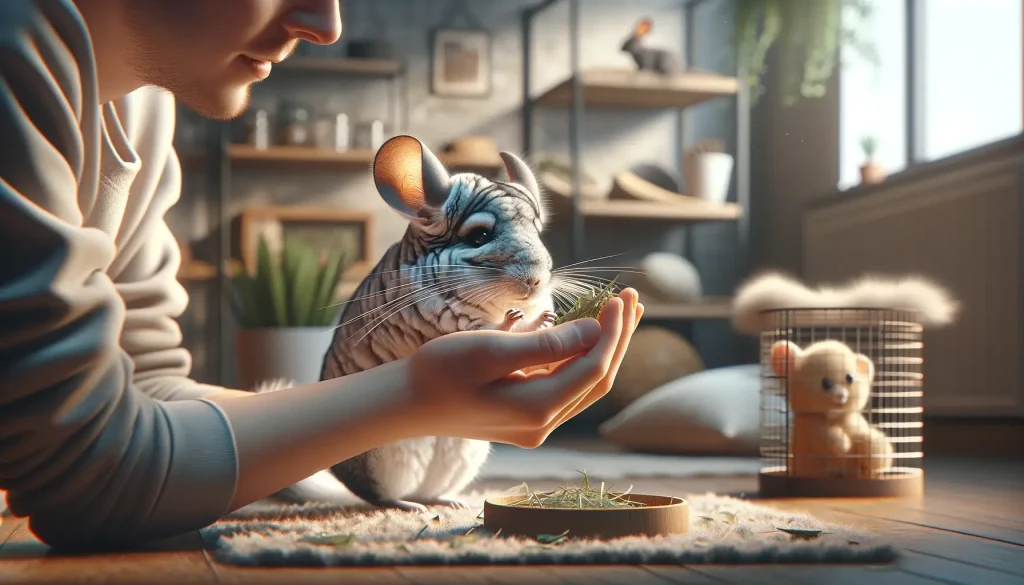
At Home Care Tips
Chinchillas are captivating pets, known for their clean, quiet demeanor and distinctive appearance. To ensure your chinchilla has a long, healthy life, understanding their specific needs is crucial. Let’s explore key aspects of chinchilla care that every owner should know.
Chinchilla Diet
A proper diet is critical for a chinchilla’s health. They require a high-fibre diet, with hay being the most important component. This not only supports their digestive system but also helps manage their tooth growth. Feeding them caecotrophs, or special droppings, is also part of their natural behavior, aiding in nutrient absorption.
Behavior and Social Needs
Chinchillas are not just athletic; they are highly social. In the wild, they form colonies of over 100 individuals. Recognizing this, pet owners should provide adequate social interaction, whether it’s through spending time with them or considering a second chinchilla for companionship.
Creating the Perfect Habitat
Originating from cool, dry climates of South America, chinchillas need an environment that replicates their natural habitat. Their cage should be spacious, with areas to jump and hide, and maintained at a cool temperature to prevent overheating due to their soft, dense fur.
Health and Wellness
With the capability to live 10-20 years, chinchillas require committed care. Regular veterinary check-ups, a proper diet, and a suitable living environment are foundational to their well-being. Furthermore, understanding their nocturnal nature helps in synchronizing your interactions with their active periods.
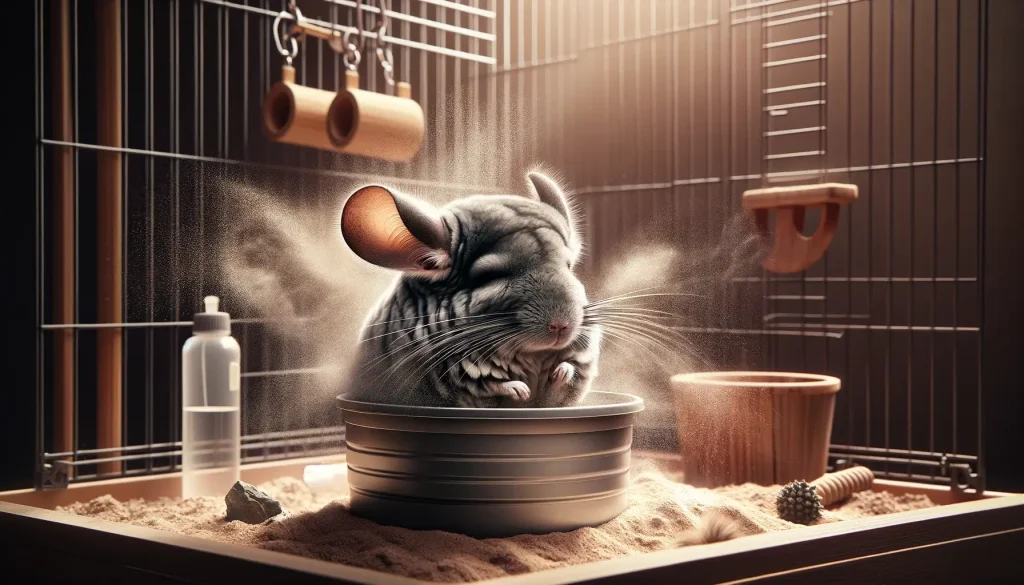
Chinchilla Grooming
Keeping a chinchilla as a pet involves more than providing them with the right habitat and diet; grooming plays a crucial role in their care. Unlike other pets, chinchillas require a unique form of grooming to maintain their health and wellbeing. Their dense fur, which was originally adapted to protect them in cold environments, is prone to matting and overheating if not properly cared for.
One of the most distinctive aspects of chinchilla grooming is the dust bath. Chinchillas do not bathe in water like many other animals. Instead, they roll in volcanic ash or specially formulated dust to absorb oil and dirt from their fur. This process not only keeps their coat clean but also prevents their dense fur from matting. Providing a dust bath two to three times a week is essential for their hygiene. However, it’s important not to overdo it, as too frequent dust baths can dry out their skin.
Another key aspect of grooming involves monitoring and managing their nails and teeth. Chinchillas’ nails can become overgrown if not regularly trimmed, leading to discomfort and mobility issues. Similarly, their teeth are constantly growing and need to be kept in check through proper diet and chew toys. Neglecting these aspects of grooming can lead to serious health concerns for your chinchilla.
Beginner Guide to Raising Quail at Home
What are the Signs of a Dog Concussion?
What Causes Your Dog’s Ears to Smell Bad?
When your dog’s ears start to emit an unpleasant odor, it might leave you puzzled…
Methimazole Treatment for Cat Hyperthyroidism
Methimazole plays a crucial role in managing feline hyperthyroidism, a condition marked by an overactive…
Got Hummingbirds in your Backyard? Here’s How to Care for Them.
Why Does Your Cat Pee Outside the Litter Box?
Cat’s Litter Box Issues It’s not uncommon for cat owners to face the frustrating dilemma…




